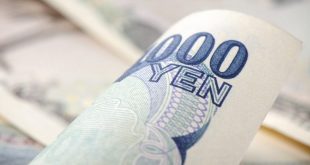Amid difficulties in Russian refining and shipping across the Red Sea, Shell reported a $7.7 billion profit for the first quarter, exceeding estimates and driving higher oil trading and liquefied natural gas production.
Over the following three months, Shell intends to repurchase $3.5 billion worth of shares, continuing at the same pace as the prior quarter. At $13.3 billion, Shell’s cash flow increased 6% from the previous quarter, demonstrating robust operational performance, especially in the LNG segment. The European energy index fell by 0.7% while the company’s shares closed 1.9% higher.
Adjusted earnings for Shell’s chemicals and products operations, which include oil trading and refining, increased by more than three times to $2.8 billion in the most recent quarter. The trade of refined oil products experienced a surge in recent months due to the difficulties caused by Ukrainian drone assaults at Russian refineries and shipping disruptions in the Red Sea.
Additionally, Shell planned refinery maintenance for the final quarter of 2023, which will give it an additional advantage when it comes to delivering oil products like diesel and petrol.
With rising revenues, declining expenses, and declining debt, Shell has outperformed expectations. Efforts to reduce expenses and concentrate on successful activities have resulted in a 14% increase in shares for Shell Energy and Chemicals.
Why has Shell quitted China’s Power Market?
With effect from the end of 2023, the corporation has left China’s power market, which includes electricity producing, trading, and marketing. Shell withdrew its 2035 goal and softened its 2030 carbon reduction target in March in response to the rising demand for gas and the unpredictability of the energy transition.
Later this month, shareholders will cast their votes on Shell’s strategy as well as a shareholder resolution urging the business to impose stricter climate commitments. While sales decreased by 7% to 16.87 million tons during the quarter, Shell’s LNG production increased by 7% to 7.58 million metric tons.
Increased production from the Prelude floating LNG project off the Australian west coast was the main driver of this growth. Although Shell is the largest LNG dealer in the world, it is not involved in the U.S. shale area, where a massive natural gas glut has negatively impacted prices and reduced the earnings of producers like Exxon and Chevron.
In the quarter, Shell’s total production of petrol and oil increased by 3% to 2.91 million barrels of oil equivalent per day. The company’s approach is to give priority to projects that will yield higher profits, especially those in the oil and natural gas industries. One of the first Shell companies to take an active role in China’s power trading and carbon emissions markets was Shell Energy China.

 Noor Trends News, Technical Analysis, Educational Tools and Recommendations
Noor Trends News, Technical Analysis, Educational Tools and Recommendations




